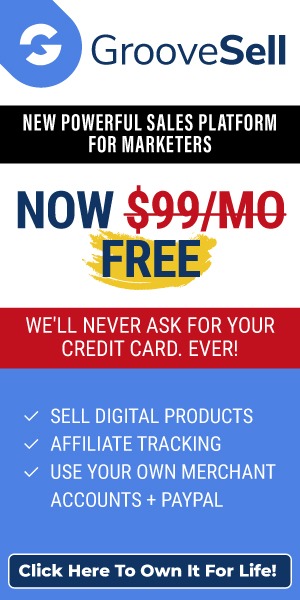
Podcasting offers countless opportunities to connect with a growing and engaged audience, establish strong rapport, and cultivate a loyal following.
However, if you’re new to podcasting, you may be wondering how to get started.
Fear not, as I will guide you through five simple steps that will launch your podcast in no time at all.
Step 1: Choosing Your Topic and Naming Your Podcast
Take out a piece of paper and ask yourself these two questions:
- What is your expertise or the expertise of your business?
- What topics are your listeners genuinely interested in?
Assuming you already know your audience for the second question, you should have a good understanding of what they want and care about if you have been actively blogging, marketing, and using social media.
However, if you are unsure, it is essential to conduct market research to identify their fears, problems, and desires.
This information will help you determine what matters most to them.
Once you have a list of your strengths and a separate list of your audience’s interests, look for the overlap between these two lists.
This is where your strengths align with your audience’s interests, creating the sweet spot or the core content for your podcast.
It will also provide you with numerous ideas for subtopics to cover in individual episodes.
Now that you have identified your main topic, it’s time to choose a suitable name for your podcast.
You can opt for a clever name, a name directly related to your topic, or even use your own name.
If you decide to go with a clever name, be mindful not to confuse potential listeners. It’s preferable that your topic remains clear even with a clever name.
However, there are successful podcasts out there with clever names that don’t immediately reveal their content, such as “Invisibilia,” which explores unseen influences on behavior and ideas.
Naming your podcast after your topic or a main keyword is a straightforward approach.
For example, “How I Built This” focuses on stories of company and movement creation.
If you choose to name your podcast after yourself, it implies that you believe your name is already somewhat known within your niche or that you intend to establish that recognition soon.
Both approaches are acceptable. “The Joe Rogan Experience” is an excellent example of a podcast named after its host.
If you need assistance in finding a suitable name for your podcast, you can visit the website https://kopywritingkourse.com/podcast-name-generator/ and provide your topic, name, and location.
The generator will offer suggestions based on your inputs, which can be entertaining and helpful.
To generate more ideas, brainstorm common keywords and phrases that your listeners might use when discussing your topic.
Then, use these keywords to come up with potential names. Write down all ideas, no matter how silly they may seem initially.
Afterward, set the list aside for a day. When you revisit it with fresh eyes, select your favorite names and seek opinions from your team, mailing list, or contacts.
Give it another day before making a final decision. If you’re torn between two names, opt for the shorter or more memorable option.
Step 2: Choose Your Podcast Format
Sure, I understand that the format of your show is currently in audio form.
However, another aspect to consider when discussing format is how your show will be structured.
Will it consist solely of you speaking, or will you have one or two other team members joining you? Alternatively, will you be conducting interviews with guests?
Each of these formats has proven successful in the world of podcasting, but it’s important to determine which one suits you best.
Let’s delve into each format individually:
1. Podcasting Solo:
If you are an expert in your niche and possess extensive knowledge on your topic, or have the ability to acquire the necessary knowledge, and you can confidently carry a show on your own, then this format may be ideal for you.
Some individuals, such as comediennes, commentators, and teachers, excel at delivering engaging and entertaining content for a significant duration without the need for additional hosts.
However, it’s worth considering that while you may have plenty to discuss initially, there may come a point where you exhaust your topics.
Additionally, if this format doesn’t align with your strengths and preferences, burnout could become a concern.
2. Podcasting Co-Hosts:
Do you have a partner with whom you can collaborate, allowing both of you to share the speaking time?
This format provides an opportunity for lively banter alongside your core topic. Engaging discussions can be achieved with two or three individuals.
However, it’s important to avoid overwhelming your listeners by involving more than three hosts, as they are unable to visually distinguish between them.
The co-host format works particularly well when there are opposing opinions, such as in a political podcast, where hosts from different sides of the spectrum can engage in passionate and thought-provoking debates.
3. Podcasting Interviews:
This format offers great versatility, as you don’t need to be the expert on every topic. Instead, your role is to ask insightful questions.
Initially, you can invite friends and influencers in your industry to be your guests, gradually expanding to bigger names who bring their own audience while simultaneously building yours.
By featuring guests, you can attract more listeners due to their influence and their willingness to promote their appearance on your podcast through emails or social media announcements.
After choosing between podcasting solo, having co-hosts, or conducting interviews, there’s another factor to consider: the structure of each episode.
Will you focus on one topic per episode, or will you incorporate segments into your show?
To illustrate, traditional TV news includes various segments like local news, national news, weather updates, and sports coverage.
Similarly, a business podcast might feature a segment on news relevant to the topic, a “how-to” segment, and an interview with a guest.
Step 3: Recording and Producing Your Podcast
Here are some essential tools that you may find useful for your podcasting needs:
– Skype is a great tool for making calls and conducting interviews.
– Consider using Ecamm Movie Tools Call Recorder, which connects to Skype and allows you to record conversations. It even records separate audio tracks for each speaker, making it easier to enhance the audio quality later on.
– Having a professional microphone can greatly improve the sound quality of your podcast.
– Invest in a pair of headphones to avoid picking up echo from your interviewee’s voice while still being able to hear them clearly.
– Find a quiet room where you can record your interviews without any background noise.
– If you need music for your podcast, AudioBlocks.com is a great resource to discover suitable tracks.
To give your podcast a professional touch, consider creating a well-crafted introduction and conclusion.
This introduction can be used consistently for all episodes, effectively branding your podcast and making it more appealing.
You may even want to hire a professional voiceover artist to introduce your podcast, providing important details such as the podcast’s name, the benefits it offers, and a call-to-action to visit your website for a free incentive.
Additionally, it is recommended to record episode-specific introductions after each interview.
This allows you to highlight your interviewee’s expertise, introduce the episode’s topic, and engage your listeners by addressing a problem or benefit they can expect from the episode.
Remember to introduce yourself as the host and restate the name of your podcast to reinforce its presence in the listener’s mind.
Just like a television show, commercials can be included in your podcast.
Use these commercial breaks to give away exclusive content, advertise sponsors, or promote affiliate links.
For example, if you want to build your email list, offer something valuable for free on your landing page.
If you have sponsors, showcase their products during these breaks. If you are an affiliate for your guest, consider advertising your affiliate link for their product.
When transitioning back to the episode, your listeners that there is more valuable advice to come and provide a call-to related to the discussed topic.
For instance, if the episode is about increasing traffic, encourage listeners to sign up at a specific URL to learn how to double or triple their traffic.
Finally, conclude your podcast episode by thanking your guest, sharing URLs for more information or offers, and reminding your audience to explore other episodes or subscribe for future content.
Step 4: Finding Your Guests, Doing Interviews
If you plan on having guests on your podcast, here are some strategies to encourage them to come on your show and provide them with a great experience.
Initially, you might worry about finding guests for your first few episodes.
However, by approaching your existing customers, email subscribers, and industry acquaintances, you’ll likely have enough guests to fill multiple podcasts.
Look for individuals who have overcome significant challenges that others would find valuable to hear about.
Ideally, they should have interesting stories that can help listeners achieve their own goals.
Additionally, you can reach out to companies and individuals from whom you have purchased products or services.
For instance, if your podcast focuses on online marketing and you recently bought a $500 course on driving traffic, consider inviting the course creator to be a guest on your show.
Obtaining podcast guests is often easier than finding guest bloggers because guests don’t have to invest as much time and effort into preparing for the interview, unlike guest bloggers who need to create a comprehensive blog post.
Moreover, being featured on your podcast gives guests access to your listeners, allowing them to make offers, such as free reports or videos, to build their own email lists. This exposure can greatly benefit them.
When reaching out to potential guests, avoid sending generic emails.
Instead, explain why you specifically chose them, emphasize the value of their contribution, and highlight how they can personally gain from being on your show.
Provide a link for them to schedule a conversation with you to discuss the upcoming interview.
During this conversation, learn about the significant challenges they have recently overcome and the process they went through to achieve their desired results.
This will help you determine the right questions to ask and give you an idea of what to expect during the interview, making it an excellent icebreaker and preparation opportunity.
After the conversation, compile the questions you plan to ask and send them to your guest.
Ideally, aim for a 20-minute interview duration to accommodate the average commute time of 25 minutes.
However, don’t be too strict with the length, as some interviews may be too captivating to end at exactly 20 minutes, while others may naturally conclude within that timeframe.
When sending the questions, suggest a suitable time for the actual interview and provide options for scheduling using tools like Calendly or other scheduling apps.
To ensure the best possible interview, offer your guest a few suggestions, such as finding a quiet location, eliminating distractions and background noises, using headphones and a microphone, and silencing phones and notifications.
Additionally, inform them that the recording process may take approximately 45 minutes.
The day before the interview, send a reminder of the scheduled time.
If the interview is in the afternoon or evening, send a second reminder on the day of the interview, as people can easily forget due to their busy schedules.
Clearly communicate what the guest should expect during the interview. Will you record a separate introduction and conclusion?
Are there additional questions that may arise during the conversation? Will you delve deeper into their answers by asking follow-up questions?
Remember to let your guest do most of the talking since they are the expert, allowing their knowledge and insights to shine.
Express your gratitude and appreciation to the interviewee, letting them know when you expect the episode to be released.
Additionally, ask for any other necessary information, such as their bio or headshot.
Once the episode is live, inform them and provide the episode link along with any social media graphics you have designed, making it effortless for them to share with their own audience.
Step 5: More Tips and Things to Know
Consider using a podcast hosting service like Libsyn to easily share your podcasts on popular platforms such as iTunes, SoundCloud, Google Play and Stitcher.
Before officially launching your podcast, publish a pre-launch announcement to gather feedback.
Share rough cuts of your first three episodes, including any filler words or pauses.
Request feedback from your audience to help you improve the quality of your episodes.
Based on their input, you can decide whether to proceed with the existing episodes or start over.
The aim is to ensure the success of your podcast before the actual launch.
Create an “Episode Zero” to introduce your podcast to your audience.
In this episode, explain the purpose of your podcast, why you chose its name, the goals you aim to achieve, and the type of guests and knowledge your listeners can expect. Treat it as an introductory episode.
Prior to your official launch, record several episodes in advance. This way, you can have 2 or 3 episodes prepared to release on the big launch day.
By having a backlog of content, you can adhere to your publishing schedule without rushing yourself or your guests.
The frequency of your podcast episodes will determine the number of pre-recorded episodes you should have.
For instance, if you release one episode per month, you may only need 3 or 4 episodes ready for launch.
On the other hand, if you release 2 episodes per week, it’s advisable to have a dozen or more episodes prepared.
Give careful thought to the titles of each podcast episode. Ideally, provide a benefit in the title, particularly if you have guest speakers.
For example, a title could be “How to Generate 10x the Leads and Close 5x the Sales while doing 50% Less Work with Joe Smith.”
This helps attract listeners by highlighting the value they can gain from the episode.
Use graphic design to establish and maintain your podcast’s branding.
Consistency in your marketing images and graphics will help distinguish your podcast from others on platforms like iTunes.
Create corresponding graphics for each episode. If you lack graphic design skills, it’s worth considering hiring a professional to assist you.
Promote each podcast episode on your blog by dedicating a separate blog post to it. This allows you to introduce your current blog audience to your podcast content.
For each blog post featuring a podcast episode, consider including a feature blog graphic to showcase the talent you’re bringing to your audience.
Embed the podcast episode using a player like Podcast Motor or Smart Podcast Player, allowing your readers to listen to the episode directly on your blog.
Include a list of key takeaways from the episode to entice your audience to listen.
Incorporate guest quotes that highlight their credibility and can be easily shared on social media.
Create quote graphics to further promote the episode on social platforms. Include your guest’s bio to showcase their expertise.
Additionally, you may offer a transcript for those who prefer reading or referencing specific advice from the episode.
Consider making the transcript available on the page, providing a download link, or offering it in exchange for an email address.
Lastly, encourage your audience to subscribe to your podcast, whether it’s through iTunes, your email list, or any other platform you prefer for sharing and listening to episodes.
Here are some additional ideas for your podcast content:
– Conduct interviews with influential individuals.
– Highlight your customers, clients, prospects, or partners.
– Discuss topics that are relevant and important to your listeners.
– Incorporate regular segments like “Tip of the Week.”
– Share success stories and case studies.
– Provide product recommendations or spotlights.
– Engage with your listeners through FAQs or a Q&A session.
– Share captivating stories.
– Showcase testimonials.
– Offer instructional content on how to do various things.
– Share news related to your niche and provide insights on how to maximize its benefits.
Starting a podcast requires effort, but it is definitely achievable.
To motivate you further, here are some benefits of being a podcaster that you may not have considered before:
1. Capitalize on the growing demand for podcasts to position yourself effectively.
2. Reach a mobile audience as podcasts can be listened to anywhere.
3. Monetize your podcast through product promotions or advertising.
4. Use podcasting as a means to connect with your audience and build a loyal following.
5. Enhance your credibility and reputation through podcasting.
6. Have the opportunity to interact and establish relationships with industry experts through interviews.
7. Gain recognition as an expert in your niche and potentially become a minor celebrity.
8. Attract new listeners, expand your audience, and acquire new customers.
9. Benefit from the expertise of the guests you interview, even if you’re not an expert yourself.
10. Build influence, gain instant credibility, and become a more confident speaker.
11. Repurpose your podcast content into other forms such as ebooks, articles, and social media posts.
12. Enable easy sharing of your podcasts on social media platforms.
13. Connect with industry leaders who may have been difficult to reach otherwise.
14. Generate ongoing online buzz surrounding your podcast.
15. Increase your visibility and potentially become a high-profile public speaker.
16. Leverage your podcast for bartering opportunities and collaborations.
17. Hosting your own show can positively influence people’s willingness to do business with you.
18. Open doors to new income streams and unexpected opportunities.
19. Experience the excitement and enjoyment that podcasting can bring to your business.
Starting a podcast requires patience as it may take time to build an audience. However, with consistency and persistence, your efforts will pay off over time.
By providing value and staying committed, you can achieve remarkable things that may even surprise yourself.













